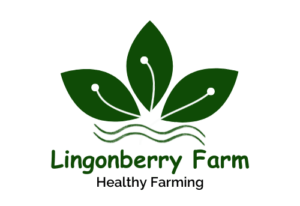Lingonberries are small, bright red berries known for their tart flavor and impressive health benefits. Native to the forests and tundras of the Northern Hemisphere, these berries have been used for centuries in cooking, medicine, and preservation. Today, lingonberry farms are becoming increasingly popular, offering a sustainable way to cultivate this unique fruit while providing fresh, high-quality produce to consumers.
What Is a Lingonberry Farm?
A lingonberry farm is a type of agricultural operation dedicated to growing and harvesting lingonberries. Unlike many other berries, lingonberries thrive in acidic, nutrient-poor soil and cooler climates. They are hardy plants that can survive cold winters and poor soil conditions, making them ideal for regions with challenging growing environments.
Farming lingonberries involves careful soil preparation, planting, and maintenance. Farmers must ensure that the soil is acidic enough for the berries to thrive. Raised beds, proper drainage, and mulch are often used to protect the plants and encourage healthy growth. While lingonberries can grow wild, cultivated farms allow for higher yields, better quality fruit, and more consistent production.
The Growth Process
Lingonberries are perennial plants, meaning they grow year after year once properly established. They have shallow roots and low, spreading branches, making them easy to manage on a farm. Farmers often start by planting young lingonberry plants in well-prepared soil.
The growth process includes:
- Soil preparation: Acidic soil with good drainage is essential. Farmers may add peat moss or other organic material to adjust pH levels.
- Planting: Young plants are spaced carefully to allow room for spreading and to reduce competition for nutrients.
- Watering: Lingonberries need consistent moisture, especially during the growing season, but they do not tolerate waterlogged soil.
- Weed and pest control: Mulching and natural pest control methods help protect plants without relying on harsh chemicals.
- Harvesting: Lingonberries are typically harvested in late summer or early fall. The berries are hand-picked or gently shaken from the branches to avoid damage.
Once harvested, the berries can be used fresh or processed into jams, juices, sauces, and baked goods.
Benefits of Lingonberries
Lingonberries are not only tasty but also incredibly healthy. They are rich in antioxidants, vitamins, and minerals, which help support overall health. Some of the benefits include:
- High in antioxidants: Lingonberries contain polyphenols and flavonoids, which protect cells from damage.
- Supports heart health: Studies suggest that lingonberries can improve cholesterol levels and support cardiovascular health.
- Promotes urinary health: Similar to cranberries, lingonberries may help prevent urinary tract infections.
- Anti-inflammatory properties: The compounds in lingonberries can reduce inflammation and support immune function.
These health benefits make lingonberries popular not only in cooking but also in natural health products and supplements.
Uses of Lingonberries
Lingonberries are highly versatile in the kitchen. In Scandinavian countries, they are often used to make traditional jams and sauces served with meat dishes. They can also be added to baked goods, smoothies, and salads for a tart, refreshing flavor.
Lingonberry farms often produce value-added products, including:
- Lingonberry jams and preserves
- Juices and syrups
- Dried lingonberries for snacks
- Lingonberry sauces for culinary use
Farmers may also sell fresh berries directly to consumers at markets, online, or through farm-to-table programs.
Economic and Environmental Impact
Lingonberry farms contribute to local economies by providing jobs, supporting small businesses, and supplying fresh, nutritious produce. They are also environmentally friendly, as lingonberries require minimal pesticides and fertilizers and can thrive in poor soils that might not support other crops.
By cultivating lingonberries sustainably, farmers help preserve biodiversity and maintain healthy ecosystems. Many farms also use organic methods, reducing the environmental footprint and appealing to eco-conscious consumers.
Visiting a Lingonberry Farm
Lingonberry farms often offer more than just fruit. Visitors can experience the beauty of the farm, learn about berry cultivation, and participate in harvesting activities. Some farms offer tours, workshops, and farm stores where guests can purchase fresh berries and products made on-site.
Visiting a lingonberry farm is an educational and enjoyable experience, giving people insight into sustainable farming practices and the journey of berries from farm to table.
Conclusion
Lingonberry farms are a unique and valuable part of modern agriculture. They provide delicious, nutritious berries while supporting sustainable farming practices and local economies. From cultivation to harvesting, lingonberry farming combines tradition, care, and environmental responsibility.
Whether enjoyed fresh, preserved, or processed into juices and jams, lingonberries are a testament to the power of small fruits to deliver big flavor and health benefits. For farmers and consumers alike, lingonberry farms offer a taste of nature’s red gems while promoting a sustainable and healthy way of living.
